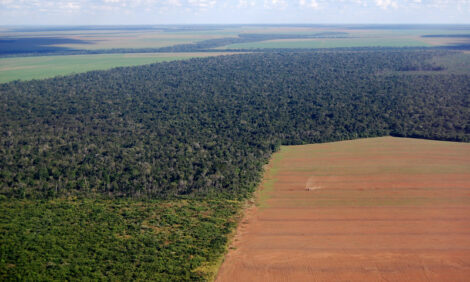



FAO Food Price Index Holds Steady
GLOBAL - The FAO Food Price Index averaged 213 points in August 2012, unchanged from July.Presenting the Index at a press conference at FAO headquarters in Rome, Director-General José Graziano da Silva said: “This is reassuring. Although we should remain vigilant, current prices do not justify talk of a world food crisis. But the international community can and should move to calm markets further,“ he added.
The FAO Food Price Index spiked six per cent in July after three months of decline.
The new Index showed international prices of cereals and oils and fats changed little in August but sugar prices fell sharply, compensating for rising meat and dairy prices.
Although still high, the FAO Index currently stands 25 points below its peak of 238 points in February 2011 and 18 points below its August 2011 level. The FAO Food Price Index is a measure of the monthly change in international prices of a basket of food commodities.
The FAO Cereal Price Index averaged 260 points in August, the same as in July, with some increases in wheat and rice offsetting a slight weakening in maize. Deteriorating crop prospects for maize in the United States and wheat in the Russian Federation initially underpinned export quotations, but prices eased towards the end of the month following heavy rains in areas hardest hit by drought in the United States and the announcement that the Russian Federation would not impose export restrictions. Renewed import demand sustained international rice quotations.
Tightening supply-demand balance
Latest forecasts also confirm a significant tightening of global grain supply-demand balance in the 2012/13 marketing season. FAO's Cereal Supply and Demand Brief, published together with the Food Price Index, said global cereal production will not be sufficient to fully cover expected utilization in 2012/13, pointing to a larger draw-down of global cereal stocks than earlier anticipated.
FAO's latest forecast for world cereal production in 2012 stands at 2 295 million tonnes, down 52 million tonnes, or 2.2 per cent, from the record in 2011. This forecast is some 4 per cent below the estimate in FAO's previous report in July, largely reflecting the worsening of maize production prospects in the United States because of the widespread and severe drought.
Global cereal utilization in 2012/13 is forecast at 2 317 million tonnes, down marginally from the previous season and 2 per cent below the 10-year trend. High grain prices are seen as curbing demand, especially for production of fuel ethanol from maize.
World production of coarse grains - maize, barley, sorghum, millet, rye and oats - is projected at 1 148 million tonnes, down 17 million tonnes, or 1.5 per cent, on 2011. The anticipated fall mainly reflects a smaller maize crop, which is expected to decline to 864 million tonnes in 2012, 20 million tonnes less than in 2011.
The FAO's forecast for world wheat production has also been downgraded from July. Global wheat production is anticipated to reach 663 million tonnes in 2012, down 15 million tonnes, or 2 per cent, from the previous forecast. Wheat output in the Russian Federation is forecast to decline by 29 per cent to 40 million tonnes compared to 2011, while production also looks set to fall sharply in Kazakhstan and Ukraine, by 47 per cent and 37 per cent respectively. By contrast, United States' wheat production is seen as increasing by 13.5 per cent to an above-average level of 61.7 million tonnes while record harvests are also expected in India and China.
Regarding other food commodity prices, the FAO Oils/Fats Price Index averaged 226 points in August, unchanged from July. Gains in soybean oil prices and strengthening quotations for sunflower and rapeseed oils were offset by persistent weakness in palm oil values.
The FAO Meat Price Index averaged 170 points in August, up 4 points, or 2.2 per cent, from July. All meat prices rose, but most of the momentum came from the grain-intensive pig and poultry sectors. The August price increase follows three consecutive months of declines.
The FAO Dairy Price Index averaged 176 points in August, up 3 points, or 1.6 per cent, from July, sustained by increases in the prices of skim milk powder, casein, butter and whole milk powder, while cheese prices remained stable. Much of the recent strength stems from firming demand combined with production constraints in areas affected by drought and rising feed costs.
The FAO Sugar Price Index averaged 297 points in August, down 27.7 points, or 8.5 per cent, from July, and 97 points, or 25 per cent, from August last year. This month's sharp fall in sugar prices reflects an improved production outlook amid more favourable weather conditions in Brazil, the world's largest sugar exporter, supportive of sugarcane harvests, and recovering monsoon rains in India.






